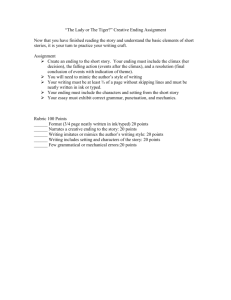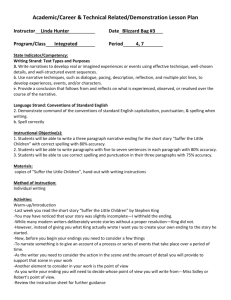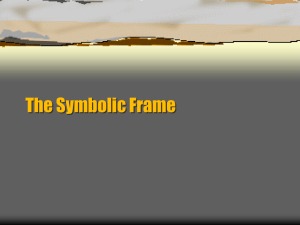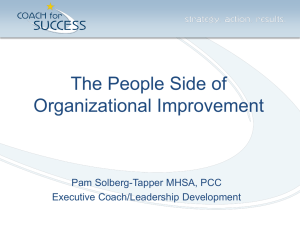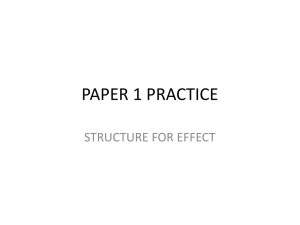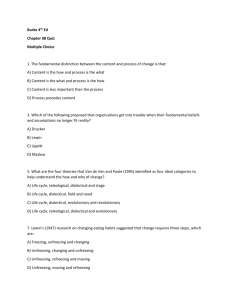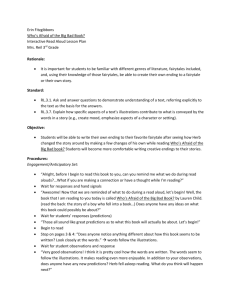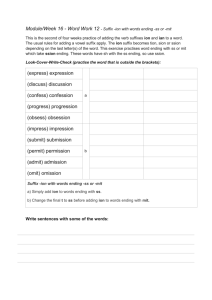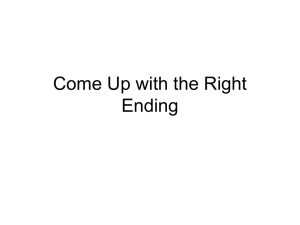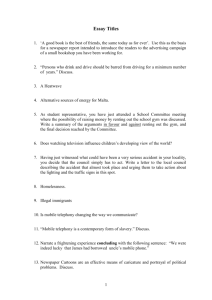Leading Change and Transitions 2011
advertisement
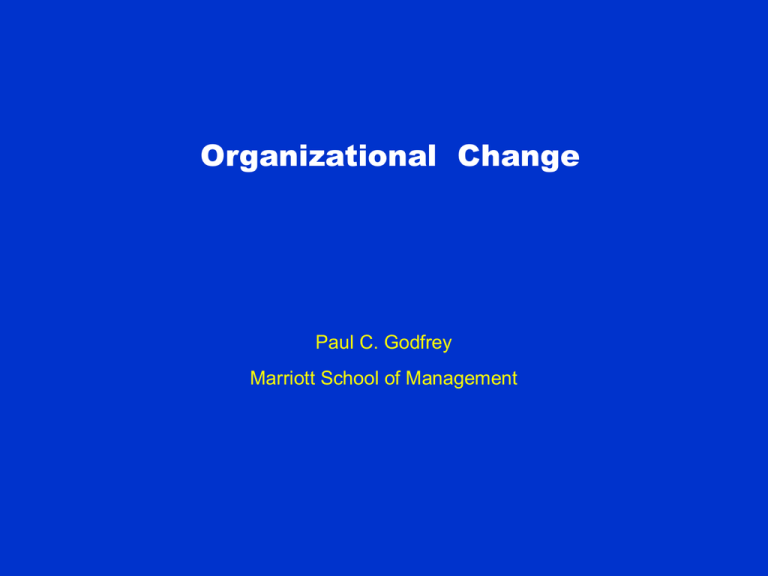
Organizational Change Paul C. Godfrey Marriott School of Management Change: Three key cognitive phases Unfreezing • Admission that current state isn’t working Change • Develop new behaviors • Clear break with past actions or processes • Trial and error process— uncertain and serendipitous • Organizational and formal • Failures and successes • Creating Alignment Re-freezing • Codification of new behaviors/ processes • Embed new behaviors in training or compensation • Signals the “end” of the change effort The change process Generate urgency Build Coalition Create Vision Share Vision Empower Action ShortTerm Wins Consolidate Gains Institutionalize Changes The Silent Phase (Unfreezing) ½ -1 ½ years The Active Phase (Change) 1-2 years Completion (Refreezing) 4-7 years Sequencing Change Strategic Intent Precise Broad Substance Hard Soft Scale Small Large Scope Isolated Org. Wide Speed Fast Slow Sequence Hard-Soft Soft-Hard Style Top-Down Bottom-Up Change: Three key emotional phases Unfreezing Change Ending Neutral Zone • Disengagement • Anxiety up, motivation down • Dismantling • Disidentification • Disenchantment • Disorientation • Other weaknesses emerge • Confusion/ creativity Re-freezing New Beginning • Settling in • Sense of security, permanence • Ability to “move forward” The transition is not so clean . . . people need to do all three at the same time. “The purely intellectual task, the part that could be done by a strategy consultant, is difficult enough, but that often is the minor part of the overall exercise. The emotional work is even tougher: letting go of the status quo, letting go of other future options, coming to grips with the sacrifices, coming to trust others, etc.” John Kotter, Leading Change, p. 88 Some useful “rules” • Endings always come before beginnings • Endings usually recycle old ending scripts • There is no timetable • Your ending is not my ending Planning for better endings • Identify who will be losing what • Accept the reality of subjective losses – Don’t tell people to “suck it up” – Listen and don’t stop the conversation • Acknowledge losses openly and with sympathy • Treat the past with respect – Don’t denigrate the past – Acknowledge that the past got us to the present – Let people take a piece of the past with them • Show that the ending ensures the continuity of what really matters The importance of communication • Consciously overcommunicate – Giving out uncomfortable information models how to do it • People don’t listen to what they don’t want to hear • Define what is over and what isn’t – If people don’t know the difference they become paralyzed Two Cautions • Remember the marathon effect • Measure twice, cut once A final thought The first task of change management is to help people understand the desired change and make it happen The first task of transition management is to convince people to leave home.

